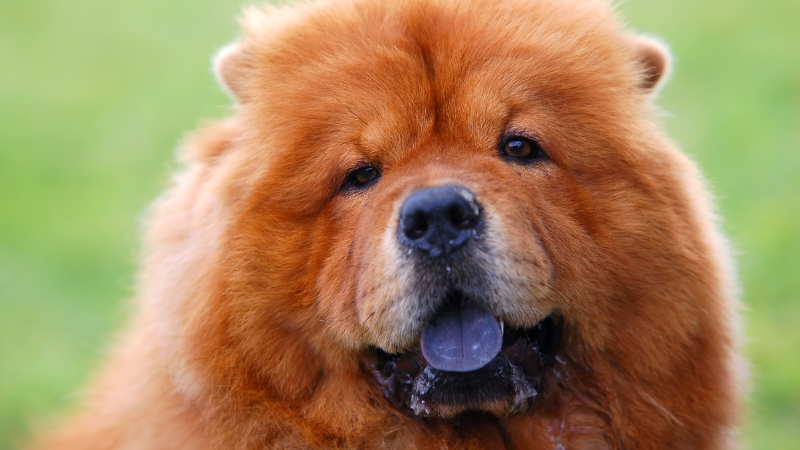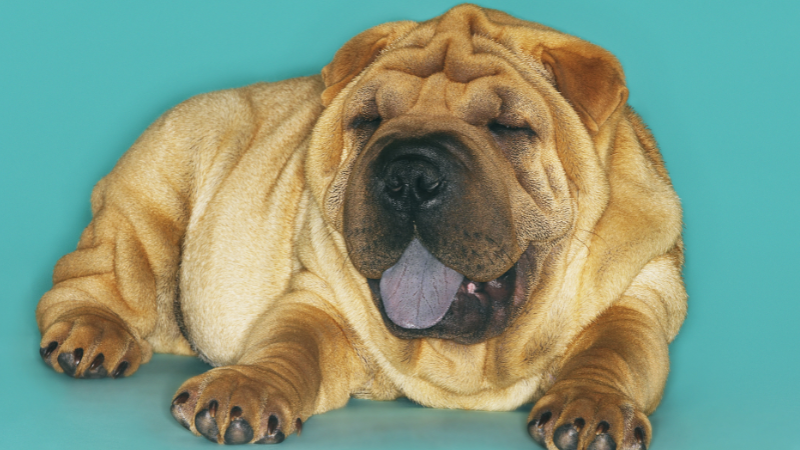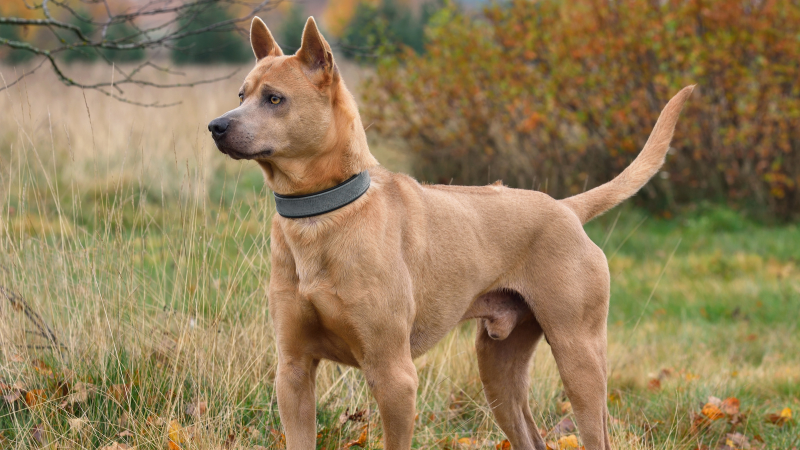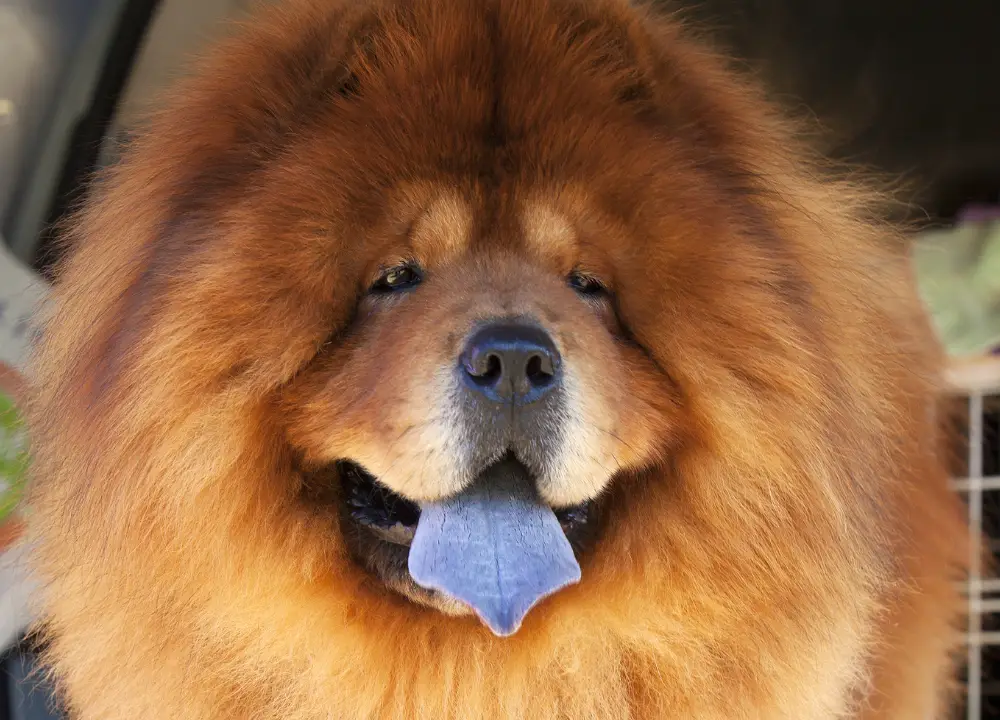The Chow Chow is the dog breed that has a blue tongue. This distinctive trait sets them apart from other breeds.
The Chow Chow is a unique and ancient breed known for its blue-black tongue. Their origin can be traced back to ancient China, where they were not only used as working dogs but also as companions for the nobility. Their thick double coat and lion-like mane make them instantly recognizable.
Despite their aloof nature, they are fiercely loyal and protective of their families. Chow Chows require early socialization and firm training due to their independent nature. They are excellent guard dogs and make wonderful companions for experienced dog owners. Their characteristic blue tongue remains a mystery, adding to the allure of this fascinating breed.
Understanding The Phenomenon
For most people, the sight of a dog with a blue tongue sparks curiosity and wonder. It’s a rare and unusual trait that sets certain dog breeds apart. The occurrence of a blue tongue in some dogs has fascinated dog enthusiasts and biologists for years, leading to an exploration of its genetic and biological underpinnings. In this article, we delve into the enigmatic world of blue-tongued dog breeds, shedding light on the unique trait and the factors contributing to its presence.
The Unique Trait Of Blue Tongued Dog Breeds
One of the most striking features associated with blue-tongued dog breeds is, undoubtedly, their distinctively pigmented tongues. This characteristic sets them apart from the majority of dog breeds whose tongues are typically pink. The presence of a blue tongue sparks interest and intrigue among dog lovers, leading to questions about the origins and significance of this distinctive trait.
Genetic And Biological Factors
Understanding the genetic and biological factors underlying the blue tongue phenomenon has been an area of great interest in the realm of canine genetics. Research suggests that the presence of a blue tongue in certain dog breeds could be attributed to a genetic mutation affecting the pigmentation of the tongue. Moreover, biological factors such as the concentration of melanin in the tongue’s tissues may also contribute to its unique coloration. Exploring these intricate genetic and biological mechanisms helps to unravel the mystery of blue-tongued dog breeds.
Popular Dog Breeds With Blue Tongues
While it’s a well-known fact that a dog’s tongue should be pink, there are certain breeds that have tongues in shades of blue. This unique feature has led to fascination and curiosity about these distinct dog breeds. Let’s delve into the world of dog breeds with blue tongues, exploring the characteristics and history of each breed.
Exploring Chow Chows

The Chow Chow, with its distinctive blue-black tongue, is a breed originating from China. Not only known for their blue tongues, but also their lion-like mane and independent nature, Chow Chows are a source of fascination for dog enthusiasts.
Analyzing The Chinese Shar-pei

The Chinese Shar-Pei is another breed that boasts a blue-black tongue. Hailing from China as well, this breed is characterized by its wrinkled skin and protective disposition. Their unique tongue color adds to the allure of this ancient breed.
Unraveling The Mystery Of The Thai Ridgeback

The lesser-known Thai Ridgeback is a breed that also showcases the blue-black tongue trait. Originating from Thailand, this athletic and loyal breed has captured the attention of dog lovers due to its striking appearance and unique tongue color.
Other Lesser-known Breeds With Blue Tongues
In addition to the well-known breeds mentioned above, there are lesser-known breeds that also exhibit blue tongues. These include the Eurasier, Akita, and some mixed-breed dogs. While not as widely recognized, these breeds contribute to the diversity of dogs with blue tongues.
Historical And Cultural Significance
Dogs with blue tongues often hold a special place in historical and cultural contexts, with various legends, symbolism, and perceptions associated with this unique trait. From ancient folklore to modern-day symbolism, the significance of dog breeds with blue tongues has intrigued and captivated people across different cultures. Exploring the historical and cultural aspects sheds light on the deep-rooted meanings and symbolism attached to these remarkable canines.
Ancient Legends And Folklore
In ancient legends and folklore, the presence of dogs with blue tongues was often associated with mystical and supernatural powers. For example, in some cultures, it was believed that dogs with blue tongues possessed the ability to see or communicate with the spirits of the underworld. These mystical beliefs contributed to the reverence and enigmatic aura surrounding these unique dogs in various ancient mythologies.
Cultural Perceptions And Symbolism
The cultural perceptions and symbolism surrounding dog breeds with blue tongues have varied across different societies. In some cultures, such as in parts of Asia, these dogs were revered as symbols of good luck, protection, and prosperity. On the other hand, certain indigenous tribes in remote regions viewed them as guardians of sacred knowledge and symbols of purity. The diverse cultural perceptions and symbolism have led to the integration of these dogs into religious rituals, traditional ceremonies, and even as spiritual guardians in some communities.
Genetic And Biological Explanations
Melanin Distribution In Dog Breeds
Melanin is the primary determinant of tongue color in dogs. In blue-tongued breeds, the melanin is distributed differently, leading to the distinct blue pigmentation. This unique distribution is the result of specific genetic factors that influence the production and distribution of melanin in the tissues of the tongue.
Role Of Genetics In Tongue Pigmentation
The genetic makeup of a dog plays a crucial role in determining the pigmentation of its tongue. Specific genes are responsible for regulating melanin production and its distribution in the tissues. Variations in these genes can lead to the blue tongue coloration seen in certain breeds, making it an inheritable trait that is passed down through generations.
Comparative Anatomy Of Blue Tongued Breeds
Blue-tongued breeds exhibit unique anatomical features that contribute to the distinctive blue coloration of their tongues. The tissue structure and vascular systems of the tongue in these breeds differ from those of other breeds, resulting in a visually striking blue hue. This anatomical variation is a fascinating aspect of canine genetics and lends insight into the complexities of tongue pigmentation in dogs.
Understanding Inherited Characteristics
Inheritance Patterns Of Blue Tongue Trait
Certain dog breeds are known for their unique physical characteristics, including the intriguing blue tongue trait. The blue tongue is an inherited characteristic that is passed down from generation to generation. Understanding the inheritance patterns of the blue tongue trait can provide valuable insights into the genetic makeup of different dog breeds.
Crossbreeding And Tongue Color Variations
When it comes to crossbreeding, the inheritance of the blue tongue trait becomes even more fascinating. Crossbreeding can lead to variations in tongue color, with some hybrid breeds exhibiting a mix of blue and pink pigmentation. This exploration of crossbreeding and tongue color variations offers a deeper understanding of the genetic diversity present in dog breeds with blue tongues.
Health Implications And Concerns
When it comes to the overall health of our beloved canine companions, the color of their tongue can be an indicator of potential health issues. While it’s essential to note that not all dogs with a blue tongue experience health problems, it’s still crucial for pet owners to be aware of the potential implications and concerns related to this peculiar trait.
Tongue Color And Canine Health
The natural color of a dog’s tongue is typically pink, with varying shades depending on the breed. However, some breeds are known for having a blue or black tongue, which can raise questions about their overall health. The presence of a blue tongue in a dog can be attributed to a higher concentration of pigmentation, specifically melanin, in the tongue tissues.
Potential Health Conditions Related To Blue Tongue
While a blue tongue in dogs is often a benign condition linked to genetics, it’s essential for pet owners to remain vigilant about any changes in their dog’s health. In some cases, a persistent blue tongue may be indicative of underlying health concerns that warrant further evaluation and potential veterinary intervention. Here are some potential health conditions related to a blue tongue:
- Dehydration or inadequate hydration levels
- Oral infections or inflammation
- Cyanosis, a condition causing a bluish discoloration due to poor oxygen circulation
- Pigment-related disorders
Care And Well-being Of Blue Tongued Breeds
Blue tongued dog breeds are undeniably unique and intriguing, and as a pet owner, it’s important to understand the specific care and well-being considerations for these distinctive pups. From diet and grooming to potential health concerns, proper attention and understanding are essential for ensuring the long-term health and happiness of your blue-tongued furry friend.
Specific Considerations For Blue Tongued Dogs
When it comes to caring for a dog with a blue tongue, there are a few specific considerations that pet owners should keep in mind:
- Dental Care: Due to the unique pigment of their tongues, blue tongued breeds may be more prone to dental issues. Therefore, regular dental check-ups and proper oral hygiene are crucial for maintaining their overall health.
- Sun Protection: Just like their skin, a dog’s tongue can be vulnerable to sun damage. Pet owners should be mindful of providing adequate shade and protection from harmful UV rays, especially during outdoor activities.
- Breeds with Blue Tongues: The Chow Chow and the Chinese Shar-Pei are two well-known breeds that possess distinctive blue-black tongues. These breeds require attentive care and regular check-ups to ensure their unique health needs are being met.
Supporting A Healthy Tongue Color In Dogs
To ensure your dog’s tongue remains healthy and maintains its natural color, consider the following tips:
- Regular Veterinary Examinations: Routine check-ups with a qualified veterinarian are essential for monitoring your dog’s overall health, including the condition of their tongue.
- Proper Nutrition: A balanced diet with high-quality ingredients can contribute to overall oral health and help support a healthy tongue color. Consult with a veterinarian to determine the most suitable diet for your pet.
- Hydration: Adequate water intake is vital for maintaining proper hydration and a healthy tongue color in dogs. Always ensure fresh, clean water is readily available for your pet.
Frequently Asked Questions For What Dog Breed Has A Blue Tongue
What Kind Of Dogs Have Blue Tongue?
Chow Chows and Shar-Peis are breeds known for having a blue-black tongue due to excess pigment.
What Does It Mean When A Dog Has A Blue Tongue?
A blue tongue in dogs can indicate a breed-specific trait or health issue, such as cyanosis, which signals a lack of oxygen. It’s important to consult a vet to determine the underlying cause and receive appropriate treatment.
Do Pitbulls Have Blue Tongues?
Yes, some pitbulls can have blue tongues due to a genetic trait. The blue color is caused by the presence of pigment cells.
What Dog Has Wrinkles And Blue Tongue?
The Shar-Pei is a dog breed that has wrinkles and a blue tongue. It is a unique and distinct feature of this breed, making them easily recognizable.
Conclusion
The unique blue tongue in certain dog breeds is a fascinating trait that has captured the curiosity of dog lovers worldwide. From the Chow Chow to the Shar-Pei, these breeds stand out in the canine world with their distinctive feature.
Understanding the origins and significance of this characteristic adds to the allure of these breeds and enhances our appreciation for their individuality.
- Smelly House Because of Dog? Take These Hygiene Tips - May 20, 2025
- How to Introduce a Dog To a Cats Without Chaos - May 6, 2025
- 4 Best Cavapoo Rescues in the UK 2024 - April 5, 2024








